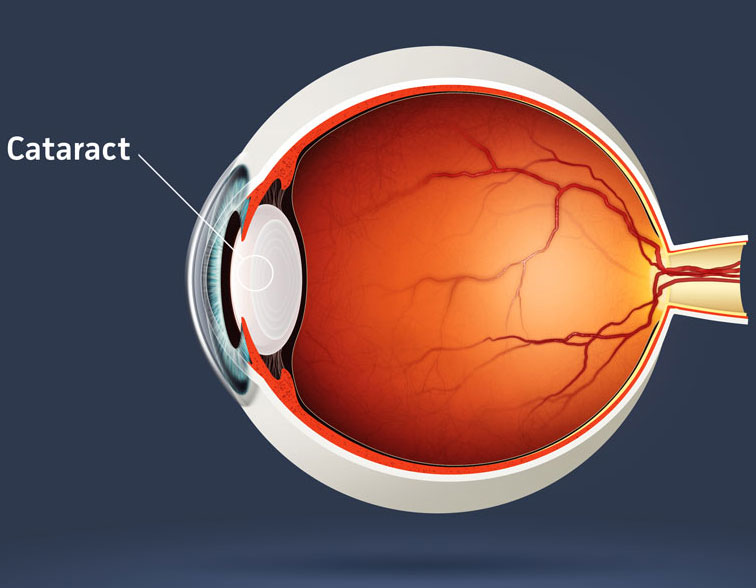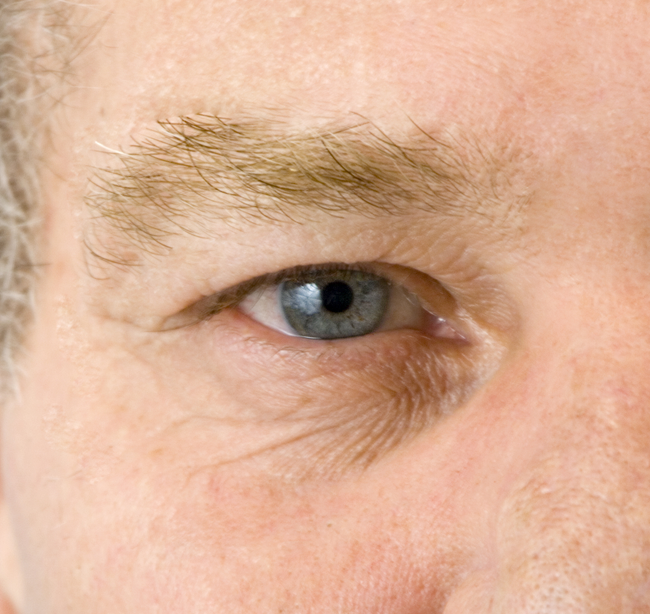
Cataract Services in Raleigh-Durham
If cataracts have limited your ability to enjoy the things you used to love, cataract surgery from the Raleigh-Durham eye surgery team at Kelly Eye Center can provide you with restored vision and a brand-new outlook on life. While all human eyes share the same basic structure, every eye is a bit different in terms of size, depth, curvature of cornea and other key features. Every eye must be carefully measured and mapped prior to cataract surgery. These images, measurements and data they provide are then used to plan and perform a personalized treatment.
Dr. Michael Kelly, our renowned cataract surgeon, offers the following types of cataract surgery to our patients in Raleigh-Durham:
Innovative, unobtrusive cataract surgery method utilizing advanced laser technology to safely and gently break up cataracts in the lens. Learn more about Laser Cataract Surgery at Kelly Eye Center ››
Conventional method of cataract surgery typically performed using topical anesthesia, a clear cornea incision, and a phacoemulsifier to break up the cataract. Learn more about Traditional Cataract Surgery at Kelly Eye Center ››
This new form of cataract surgery deposits a sterile, compounded formulation of antibiotics and anti-inflammatory medication into the back of the eye. By delivering the medicine in a time-released manner, dropless cataract surgery helps fight infection and inflammation during the important recovery period. In most cases, it also omits the need for purchasing and using prescription eye drops. Learn more about Dropless Cataract Surgery at Kelly Eye Center. ››
Advanced Technology Lens Implants
New Advanced Technology Lenses now offer our Raleigh cataract patients a full range of vision enabling them to obtain quality near, intermediate and distance vision. Learn more about Advanced Technology Lens Implants at Kelly Eye Center ››
 Indications It’s Time to Consider Cataract Surgery
Indications It’s Time to Consider Cataract Surgery
- When driving, there’s too much glare from the sun or headlights
- You are having problems seeing well enough to read, sew or watch TV
- You have trouble following a golf ball
- Your vision doesn’t improve sufficiently when wearing glasses
Cataract surgery is generally a simple outpatient procedure with little discomfort, requiring only a few hours and a topical anesthetic. The goal of the operation is to break the cloudy lens into pieces, remove the pieces and insert a man made lens.
Statistics show that 70% of all people over the age of 75 will develop cataracts, but you don’t have to let cataracts take over your life. Contact the team at Kelly Eye Center today to learn how traditional or laser cataract surgery can benefit you!
Give us a call at (919) 282-1100 to get started.
Measurements & Technology
During cataract surgery, the intraocular lens (IOL) that replaces your natural lens must be the correct size for your eye. Each eye has a specific length, a different corneal curvature, and variable intraocular dimensions. As lenses have focal distances, it is vital that the focal length of the implanted lens is appropriate for the length of the eye. It is equally important to have a healthy cornea and tear film for the sharpest vision possible after cataract surgery. Thus, prior to surgery, every eye must be carefully measured. Along with ultrasound technology, laser technology is now used to provide the most comprehensive and accurate measurements for our patients.
To determine both the lens power that is right for you and exactly where the new lens is to be placed, we believe that more than two standard measurements are necessary; therefore the following services may be used at your cataract evaluation:
Zeiss IOL Master™
The Zeiss IOL Master™ is the gold-standard in instrumentation for pre-operative measurements of patients with cataracts. It quickly and precisely performs the necessary measurements in one session: eye axial length, corneal curvature, anterior chamber depth, and “white-to-white”. The IOL Master™ is a non-contact instrument that maximizes patient comfort.
Immersion Ultrasound A-scan
Occasionally, a patient will have a cataract that is too dense to achieve a reliable axial length measurement via the Zeiss IOL Master™, or a patient may present with a difference in the eye axial length between the two eyes. When either of these situations arises, an independent test call an Immersion Ultrasound A-scan is performed. The Immersion Ultrasound A-scan involves the patient being seated in a semi-reclined position, and an ultrasound probe with a water bath is used on the corneal surface. The ultrasound unit measures the time is takes for the ultrasound wave to travel from the probe tip to the retina and back. A one-dimensional scan is produced measuring eye axial length.
Optical Coherence Tomography (OCT)
The Zeiss OCT provides Dr. Kelly a non-invasive way to scan the retinal nerve fiber layer (located in the back of the eye) to screen and monitor macular and optic nerve issues. The OCT uses light waves to produce a cross-sectional image of the retina and optic nerve. Pre-operative OCT’s of the macula are frequently performed to determine if underlying structural issues (not easily identifiable due to a denser cataract) are present. Dr. Kelly counsels patients and seeks referrals to specialists for patients in which a macular or optic nerve issue may significantly affect vision after cataract surgery.
Oculus™ Pentacam™
The Oculus™ Pentacam™ is a form of corneal topography used at the Kelly Eye Center. Corneal topography measures the curvature of the front corneal surface through a combination of computer-assisted video imaging and data analysis. To pictorially quantify corneal astigmatism, Dr. Kelly orders a Pentacam™ for each cataract evaluation. The Pentacam™ maps and measures corneal astigmatism by acquiring 50 measurements of both the front and back surface of the cornea in approximately 2 seconds. Dr. Kelly will then compare the Pentacam™ measurements to the Zeiss IOL Master and Cassini measurements for verification of astigmatism, and to make astigmatism and lens implant recommendations. The Pentacam™ is also utilized to perform corneal power measurements across different corneal zones in patients who have previously undergone refractive procedures.
Cassini
The Cassini is another form of corneal topography used at the Kelly Eye Center. The Cassini utilizes 672 LED lights to measure the front corneal surface. Dr. Kelly compares all corneal measurements, as stated above, prior to making surgical treatment recommendations.


